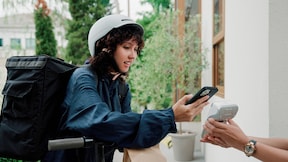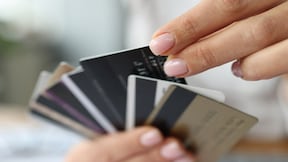Credit card basics
Credit cards can be useful when needed, but you can get the biggest benefits when you understand the basics of credit.
Learning about the basics of credit
credit card basicsUsing your credit card to support local businesses

Shop locally with your credit card to earn rewards and cash back, benefiting both local businesses and your personal finances.
credit card basicsDigital wallets and how they work

Digital wallets store payment info on mobile devices, enabling secure, card-free purchases. They offer convenience, security and flexibility for modern financial management.
credit card basicsBleisure travel: What it is, benefits and more

Bleisure travel is when work trips meet leisure. Find some benefits of bleisure travel and tips companies can use to make the most of business trips.
Learn ways to use your credit card wisely
credit card basics
Using your credit card to support local businesses Shop locally with your credit card to earn rewards and cash back, benefiting both local businesses and your personal finances.
Shop locally with your credit card to earn rewards and cash back, benefiting both local businesses and your personal finances.credit card basics
Digital wallets and how they work Digital wallets store payment info on mobile devices, enabling secure, card-free purchases. They offer convenience, security and flexibility for modern financial management.
Digital wallets store payment info on mobile devices, enabling secure, card-free purchases. They offer convenience, security and flexibility for modern financial management.credit card basics
Using your starter credit card abroad: What you should know Get tips for using your starter credit card abroad, including avoiding foreign transaction fees, maximizing security, and managing spending. Find out what first-time travelers should know for smooth and cost-effective international payments.
Get tips for using your starter credit card abroad, including avoiding foreign transaction fees, maximizing security, and managing spending. Find out what first-time travelers should know for smooth and cost-effective international payments.credit card basics
Why are some credit cards "easier" to qualify for than others Certain credit cards are easier to qualify for due to lower credit score requirements, security deposits and relaxed approval criteria.
Certain credit cards are easier to qualify for due to lower credit score requirements, security deposits and relaxed approval criteria.credit card basics
Managing your credit in a gig economy With the rise of short-term, flexible jobs like ridesharing and freelancing, managing your credit can be important. Discover tools to help leverage your credit card.
With the rise of short-term, flexible jobs like ridesharing and freelancing, managing your credit can be important. Discover tools to help leverage your credit card.credit card basics
Managing pet expenses with a credit card Find out how to use credit cards for pet care, earn rewards, manage budgets and avoid interest pitfalls. Make informed financial choices for your pet's expenses.
Find out how to use credit cards for pet care, earn rewards, manage budgets and avoid interest pitfalls. Make informed financial choices for your pet's expenses.credit card basics
Is getting preapproved for multiple credit cards a good idea? Wondering if getting preapproved for multiple credit card offers is a good idea? Learn the potential benefits and drawbacks of making an informed decision.
Wondering if getting preapproved for multiple credit card offers is a good idea? Learn the potential benefits and drawbacks of making an informed decision.credit card basics
How to teach your child about credit card fraud Teaching children about credit card fraud can be a helpful step in mitigating the risk of fraud. Here are ways fraud can happen and how to help prevent it.
Teaching children about credit card fraud can be a helpful step in mitigating the risk of fraud. Here are ways fraud can happen and how to help prevent it.
Explore financial education